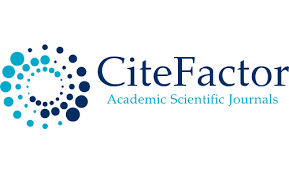The Integration of Technology into Language Teaching
Keywords:
Imitative, Intensive, Responsive, ExtensiveAbstract
This article deals with the issue of the integration of technology into language teaching and its role in improving speaking and listening skills in EFL classes. There were introduced the importance of technological tools and some practical implementations in using them for enhancing learners’ listening and speaking skill. The ideas were proved by the facts that student’s skills can be significantly increased by various technological tools such as blogs, quick pen, questionary as well as podcasting.
References
Ur. Penny. A course in language teaching. Practice and theory. Cambridge: Cambridge University Press, 1991.
Brown, G. and G. Yule. (1983). Teaching the Spoken Language. Cambridge: Cambridge University Press. Brown H. D. 2001.
Nunan, D., and L. Miller, eds. 1995. New Ways in Teaching Listening: Alexandria, VA: TESOL.
Brown, G. and G. Yule. (Teaching the Spoken Language. Cambridge: Cambridge University Press. Brown H. D. 2001
Ganesan, S., and Shalini, R. 2011. Use of Modern Technologies to Teach Communication Skills. Vol. I (I). (Agustus 2018)
Jones, Christopher and Sue Fortescue. Using Computers in the Language Classroom. Longman Handbooks for Language Teachers. New York: Longman,
Meskill, Carla. Listening Skills Development Through Multimedia.Jl. of Educational Multimedia and Hypermedia 5(2), 1996
Ishankulov Sh. U. /// Methods of developing productive language skills (writing and speaking) -15-18 pp. Electronic Journal of Actual Problems of Modern Science, Education and Training. November, 2021-11/1. ISSN 2181-9750.
Downloads
Published
Issue
Section
License

This work is licensed under a Creative Commons Attribution-NonCommercial 4.0 International License.
User Rights
Under the Creative Commons Attribution-NonCommercial 4.0 International (CC-BY-NC), the author (s) and users are free to share (copy, distribute and transmit the contribution).
Rights of Authors
Authors retain the following rights:
1. Copyright and other proprietary rights relating to the article, such as patent rights,
2. the right to use the substance of the article in future works, including lectures and books,
3. the right to reproduce the article for own purposes, provided the copies are not offered for sale,
4. the right to self-archive the article.












